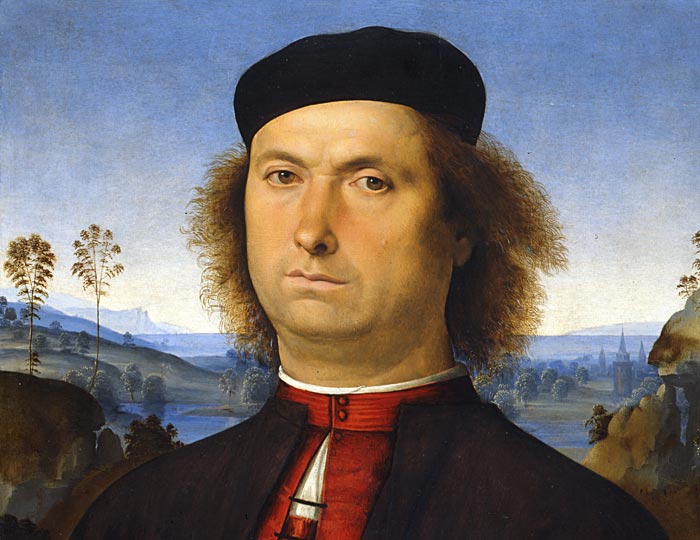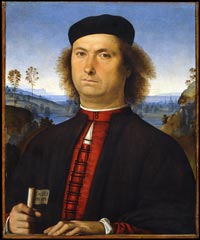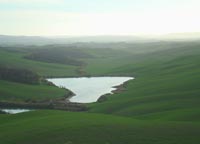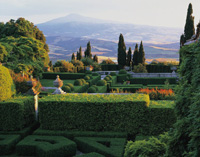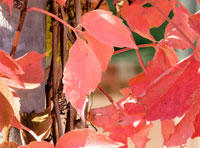Pietro Perugino | Portrait of Francesco delle Opere |
| The Portrait of Francesco delle Opere is a painting by the Italian Renaissance artist Pietro Perugino, dating to 1494 and housed in the Uffizi Gallery, Florence. |
Francesco delle Opere is portrayed from three-quarters, with a black beret and a mantle of the same color, a red blouse under which is a white shirt. His hand holds a cartouche with the words Timete Devm ("Beware of God"), the beginning of a famous preaching by Girolamo Savonarola. The hands lie on an invisible parapet which coincides with the painting's lower border, as in Flemish contemporary works such as Hans Memling's Man with a Letter. |
||
[1] Giovanni delle Corniole (Giovanni delle Opere) was an Italian lapidary. A lapidary (the word means "concerned with stones") is an artisan who forms stone, mineral, gemstones, and other suitably durable materials (amber, shell, jet, pearl, copal, coral, horn and bone, glass and other synthetics) into decorative items (e.g. cameos, cabochons, and faceted designs). Corniole was perhaps the most significant Renaissance cutter of precious gemstones during the late 15th century. He studied his craft in Florence, by emulating the detailed gemstone engravings of the Medici family's 'Grand Ducal' art collections. He was called Giovanni delle Corniole for his famed ability in cutting cornelian stone. His activity is documented in Florence in 1498 when he was trained at the court of Lorenzo the Magnificent. When Lorenzo died, Giovanni was barely twenty years old, but he was already capable of engraving the small cornelian with the beautiful, sharply distinct Portrait of Lorenzo. His unquestioned skill in the difficult practice of engraving cornelian is demonstrated in the famous oval portrait of Girolamo Savonarola. [2] Sources: Garibaldi, Vittoria (2004). "Perugino". Pittori del Rinascimento. Florence: Scala. |
||
Page at Florence's museums website | www.polomuseale.firenze.it Notizie storico critiche | Il dipinto apparteneva alla collezione del card. Leopoldo e figura nell'inventario della sua eredita' come opera di "Raffaello seconda maniera", venne attribuito nell'Ottocento al Perugino ed a Jacopo Francia, ed infine di nuovo al Perugino, quando Antonio Ramirez de Montalvo scopri' la scritta a tergo e ne decifro' solo la prima parte. Venne a lungo considerato come autoritratto del Perugino. Arte in Toscana | Giorgio Vasari, Le vite de' più eccellenti pittori, scultori e architettori (1550) | Pietro Perugino Lives of the Most Eminent Painters Sculptors and Architects, Giorgio Vasari | download pdf Pietro Perugino and the Trasimeno lake scenary | Renaissance and Mannerism Painting in Città della Pieve, Paciano, Panicale and Castiglione del Lago |
||
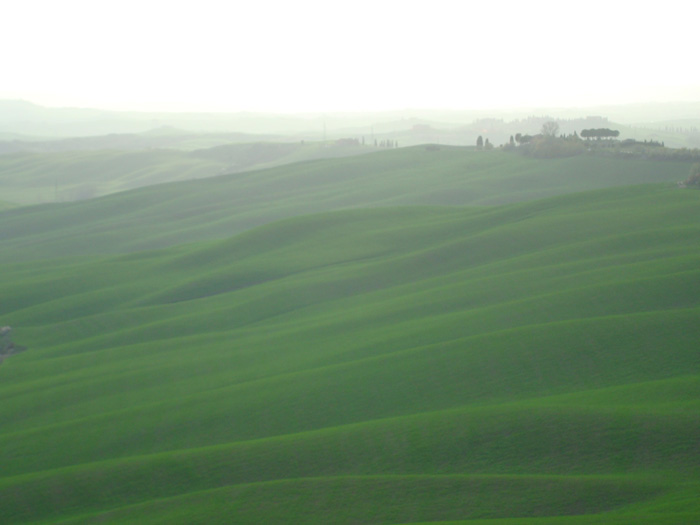 |
||||
The valley between Asciano and Montalcino, the surroundings of Poder Santa Pia |
||||
|
||||
 |
||||
Podere Santa Pia |
Pienza |
Podere Santa Pia |
||
Crete Senesi, surroundings of Podere Santa Pia |
The abbey of Sant'Antimo |
Villa La Foce |
||
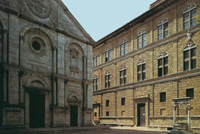 |
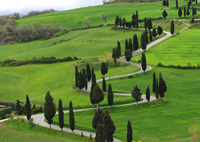 |
|||
Wines in southern Tuscany |
Pienza, Piazza Pio II |
Cipress road near Montichiello |
||
 |
||||
| Podere Santa Pia, a jewel in the heart of the Valle d'Ombrone with breathtaking views to the Tyrrhenian coast, Monte Christo and Corsica |
||||
This article incorporates material from the Wikipedia article Pietro Perugino published under the GNU Free Documentation License. |
||||

